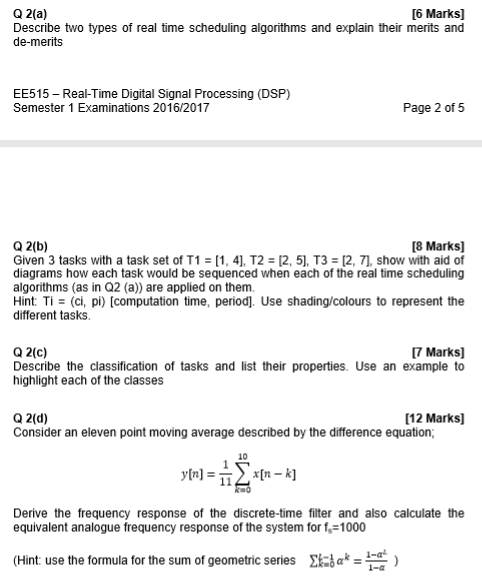Answered step by step
Verified Expert Solution
Question
1 Approved Answer
[6 Marks] Q 2(a) Describe two types of real time scheduling algorithms and explain their merits and de-merits EE515 - Real-Time Digital Signal Processing (DSP)

Step by Step Solution
There are 3 Steps involved in it
Step: 1

Get Instant Access to Expert-Tailored Solutions
See step-by-step solutions with expert insights and AI powered tools for academic success
Step: 2

Step: 3

Ace Your Homework with AI
Get the answers you need in no time with our AI-driven, step-by-step assistance
Get Started


